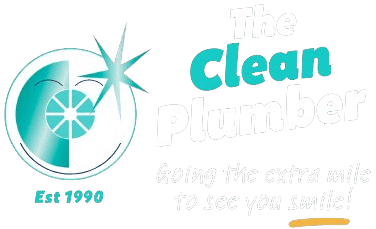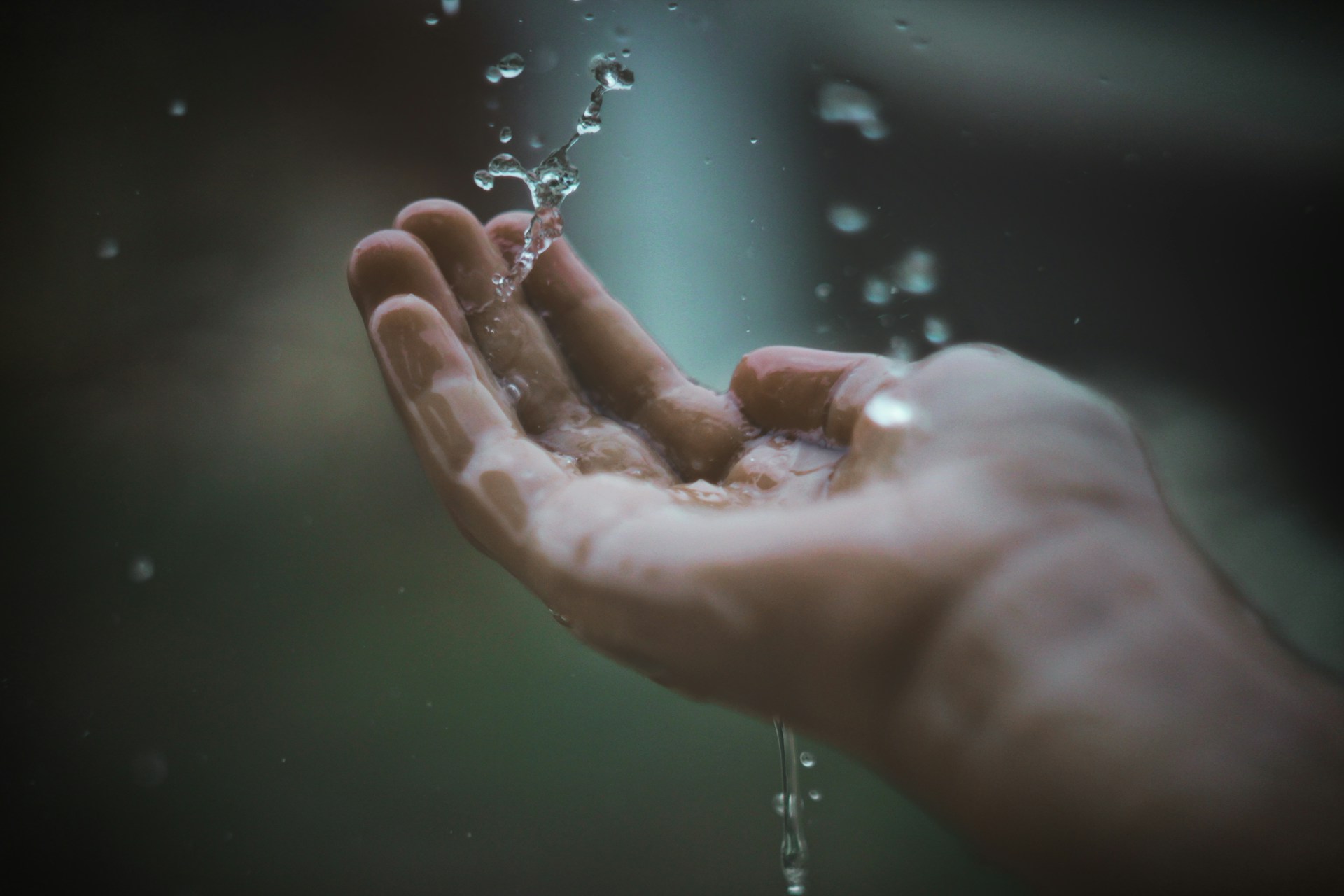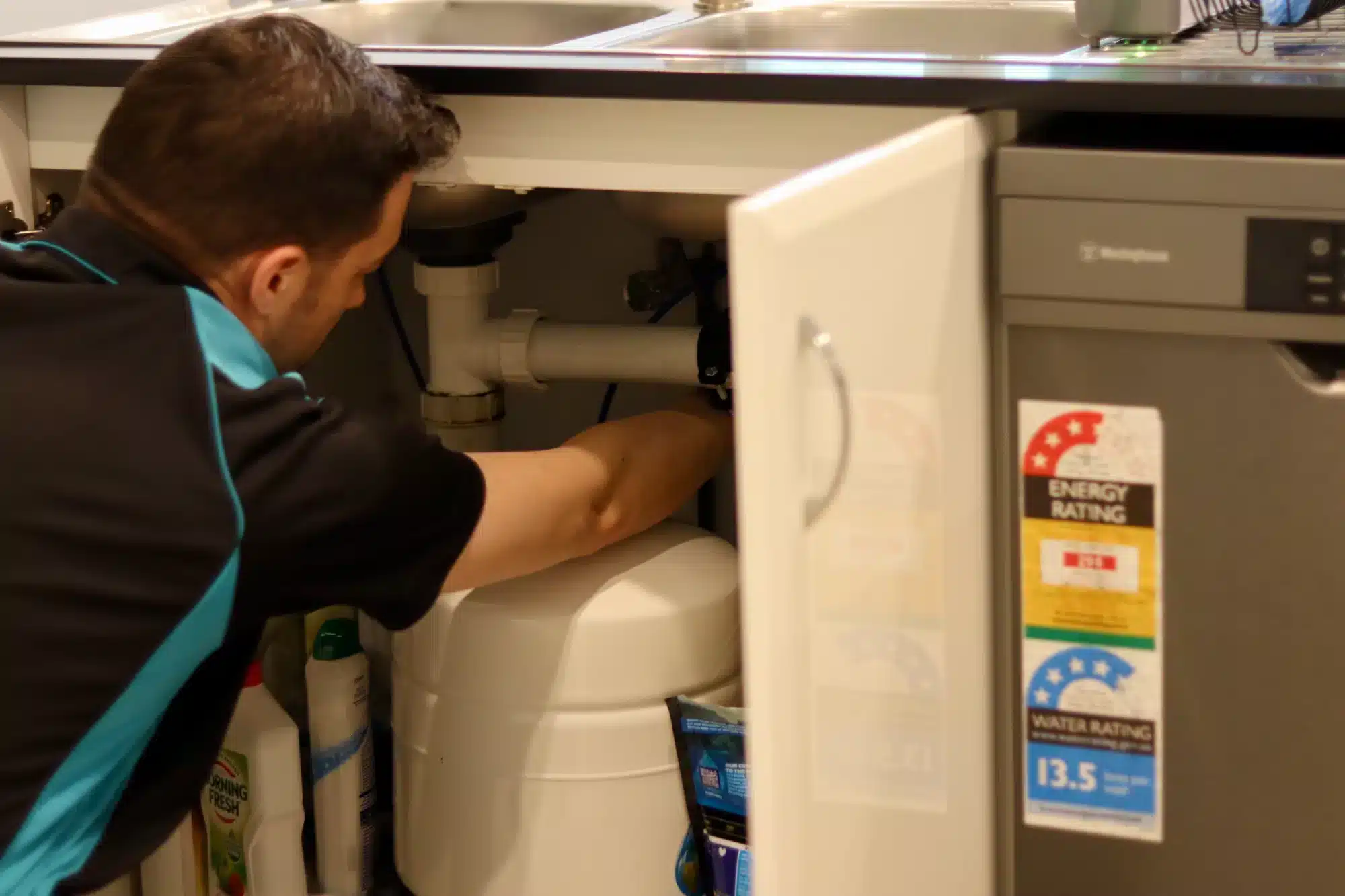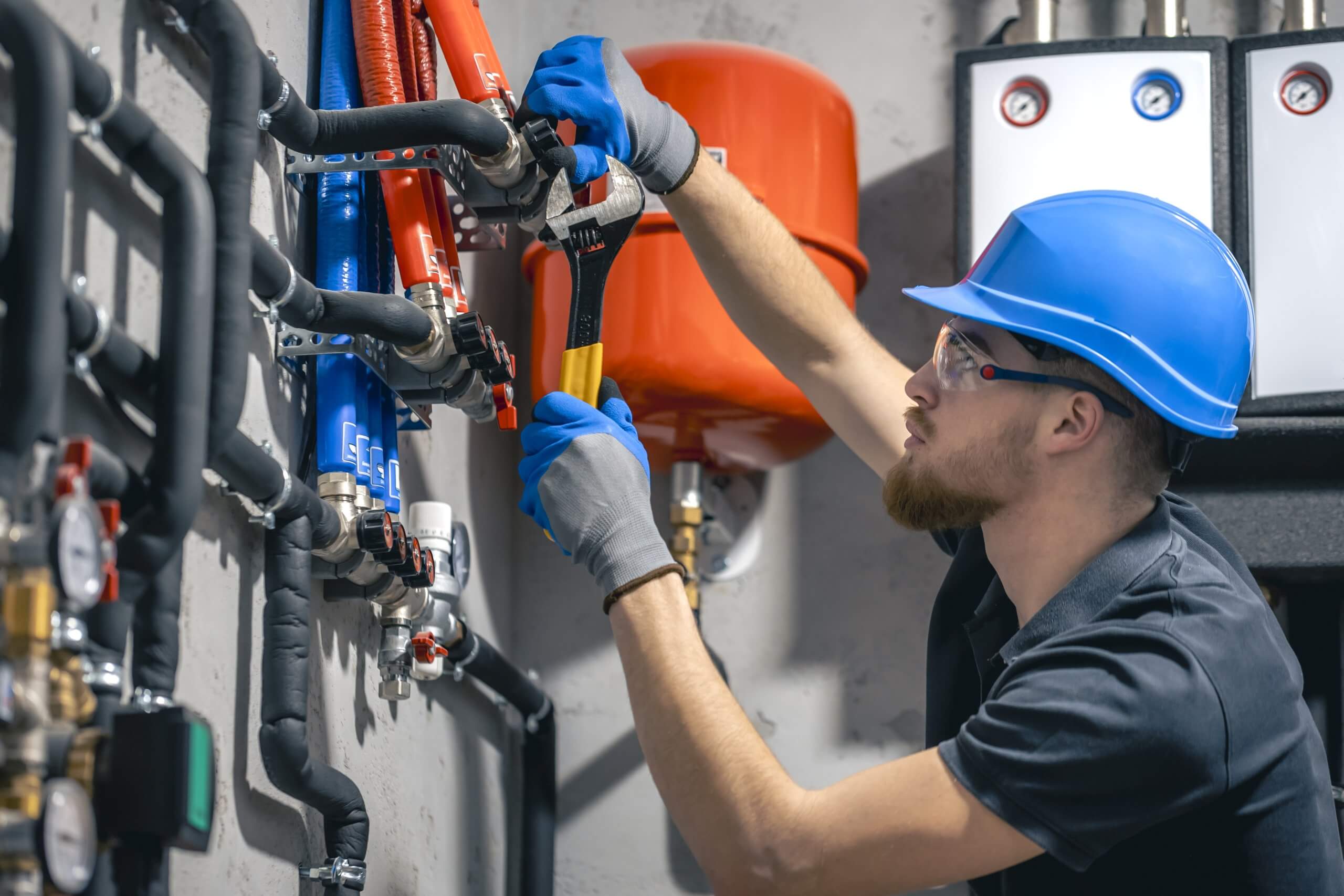If you’ve ever turned on the tap or shower only to be greeted by a weak trickle instead of a steady stream, you’re not alone. Low water pressure is a frustrating but common issue for many households across Australia. Whether you’re in a bustling suburb or a rural property, reduced water pressure can disrupt daily routines and signal underlying plumbing concerns. The good news? You don’t always need to call in a professional right away. In this guide, we’ll show you how to increase water pressure in Australia—covering the typical causes, practical DIY solutions, and the best times to engage a licensed plumber.
What is Low Water Pressure?
Low water pressure occurs when the water flow through your plumbing system is insufficient, leading to weak streams from faucets, showers, and other outlets, which is a common cause of low water. In some cases, a water booster pump might be required. It’s a common issue faced by homeowners across Australia, but the good news is that it can often be resolved with simple DIY methods or with the help of a professional plumber.
Low water pressure can affect daily activities like showering, washing dishes, or even using water using appliances, creating a frustrating experience. It can also make simple tasks take longer to complete, as you’ll need more time to fill up a pot or take a shower. The good news is that low water pressure is often fixable, and with a little effort and the right knowledge, you can restore proper water pressure to your home, ensuring that your plumbing system works efficiently.
Causes of Low Water Pressure
Low water pressure can be the result of several factors within your plumbing system or external factors, such as incoming water pressure from the municipal water supply. By understanding the root cause of the problem, you can determine the most effective solution.
Internal Factors:
Several issues within your plumbing system can contribute to low water pressure, including weak showers and malfunctioning shower heads that are difficult to enjoy.
- Aging Pipes & Corrosion: Over time, pipes made of older materials, such as steel, can corrode and accumulate rust. This restricts water flow and causes a reduction in water pressure. In some cases, you may need to replace the pipes to restore proper water flow.
- Blockages from Mineral Build-Up: Hard water is a common issue in many Australian homes. When mineral deposits like calcium and magnesium build up inside your pipes or plumbing fixtures, they can significantly reduce water flow and lead to low pressure. If your pipes are clogged with mineral build-up, cleaning them or replacing certain fixtures may be necessary.
- Broken Pressure Regulators: Pressure regulators are crucial for maintaining consistent water pressure. If your home’s pressure regulator is broken, improperly set, or not functioning as it should, it can result in fluctuating or low water pressure throughout the entire plumbing system.
- Clogged Plumbing Fixtures: Faucets, showerheads, and other fixtures can accumulate debris and sediment over time, leading to blockages. This restricts water flow and reduces pressure. Sometimes, simply cleaning or replacing these fixtures can have a noticeable impact on water pressure.
External Factors:
In addition to internal plumbing issues, external factors can also contribute to low water pressure:
- Municipal Supply Issues: Occasionally, problems with your water supplier or maintenance work on the water system can lead to temporary drops in water pressure. These issues usually resolve quickly once the work is completed, but it’s always worth checking with your local supplier to ensure that the problem isn’t related to external factors.
- Distance from the Water Source: If your home is located far away from the municipal water source, the pressure of the water can drop before it reaches your taps. This is more common in rural areas or new developments. In these cases, installing a booster pump might be the most effective way to resolve the issue.
- Gravity in Multi-Story Homes: In multi-story buildings, gravity can cause a decrease in water pressure on upper floors. This is particularly noticeable when you’re trying to get water on the top floor of a building that is located far from the water source. The greater the height difference, the more the water pressure will be reduced.
Identifying Low Water Pressure Problems
Before fixing your water pressure problem, it’s important to accurately identify whether the issue is low pressure or high pressure.
Signs of Low Water Pressure:
You might be experiencing low water pressure if you notice the following symptoms:
- Weak Water Flow: If your shower flow is weak or your faucets only produce a small stream of water, this is a clear sign of low water pressure.
- Slow Faucet Water Flow: Water comes out of your faucets more slowly than usual, or it takes longer than expected to fill a glass or pot.
- Unpleasant Water Experience: If you find it difficult to complete simple water-related tasks like washing dishes or taking a shower because of low water pressure, it’s a good indicator that something is wrong with your plumbing.
Conducting a Water Pressure Test:
To confirm that low water pressure is the issue, you can perform a water pressure test using a water pressure gauge. Simply attach the gauge to an outdoor tap or another access point in your plumbing system. The gauge will measure the pressure in pounds per square inch (psi). The ideal range for most homes is between 40 and 80 psi. If the gauge reads lower than this range, low water pressure is confirmed.
DIY Fixes for Increasing Water Pressure
Before hiring a plumber, try some simple DIY fixes that could improve water pressure in your home.
Cleaning the Aerator on the Faucet:
The aerator is a small mesh filter at the end of your faucet. Over time, it can accumulate debris, which can block water flow and reduce pressure. Cleaning the aerator is a quick and easy fix that can restore normal water pressure. To clean it, unscrew the aerator from the faucet, soak it in warm water to loosen debris, then scrub it with a small brush and reattach it.
Checking and Replacing Plumbing Fixtures:
Old or clogged fixtures like faucets, showerheads, or hoses can be major contributors to low water pressure due to the buildup of mineral deposits. Replacing these fixtures with newer, more efficient models can significantly improve water flow. For example, many modern showerheads are designed to reduce water usage without sacrificing water pressure. Additionally, regular maintenance, such as inspecting fixtures for signs of mineral build-up or corrosion, will help prevent future problems.
Solutions to Increase Water Pressure
If DIY fixes don’t improve your water pressure, it may be time to consider more advanced solutions.
Installing a Booster Pump:
A booster pump can enhance the water pressure in your home by increasing the force of the water entering your plumbing system. This is especially helpful if you live in an area with low municipal water pressure or if your home is located far from the water source. Booster pumps are designed to provide a steady flow of water, even when external factors like distance or supply issues cause low pressure.
Installing a Pressure Switch:
A pressure switch is a device that regulates the pressure in your plumbing system. It helps maintain a consistent water flow by adjusting pressure as needed. Installing a pressure switch can ensure that your water pressure remains constant, reducing fluctuations that may occur during periods of high demand or when the system experiences imbalances.
Complex Plumbing Problems
In some cases, low water pressure may be due to underlying plumbing issues that require professional attention.
When to Hire a Professional:
If you’ve tried all the DIY fixes and your water pressure remains low, it’s time to call a professional plumber. Some plumbing problems, such as corroded pipes, deep-rooted clogs, or malfunctioning pressure regulators, require specialized tools and expertise to resolve without causing further damage.
Consulting with Professionals:
A licensed plumber can assess your plumbing system, identify the cause of the low water pressure, and recommend the most effective solution. This may involve replacing corroded pipes, installing a new pressure regulator, or repairing leaks that could be draining water pressure. Professional plumbers can also offer long-term solutions to ensure your water pressure remains optimal.
Increasing Water Pressure with a Pressure Regulator
A pressure regulator is an essential component of your plumbing system. It helps control the amount of pressure that enters your home, ensuring that your plumbing system functions properly. If the pressure regulator is faulty or improperly set, it can lead to low water pressure. In some cases, adjusting or replacing the regulator may be necessary to restore normal pressure levels.
Additional Tips for Increasing Water Pressure
Fixing Leaks and Blockages:
Leaks and blockages in your plumbing system can lead to a loss of water pressure, often exacerbated by mineral buildup. Regularly checking for water leaks and repairing them promptly is essential for maintaining optimal water flow. Blockages caused by debris, mineral build-up, or sediment can also restrict water flow, so addressing any clogs as soon as they are noticed will prevent further damage.
Regular Maintenance:
Performing regular maintenance on your plumbing system, including checking your pressure tank and storage tank, can help prevent low water pressure issues in the future. This includes checking your water meter for leaks, cleaning aerators, replacing old fixtures, and inspecting the pressure regulator. A well-maintained system will ensure that your home’s water pressure remains consistent and reliable.
Frequently Asked Questions (FAQs)
Can you increase water pressure in your house in Australia, and if so, how to increase water pressure Australia?
Yes, there are many solutions available, including DIY fixes and professional installations, that can help increase water pressure. Booster pumps, pressure regulators, and replacing old fixtures are all effective ways to improve water flow.
Where is my water pressure regulator in Australia?
The water pressure regulator is usually located near your water meter or where the water supply enters your home. It’s a small device that helps control the pressure of water entering your plumbing system.
How can I make my water pressure stronger?
There are several ways to increase water pressure, including cleaning aerators, replacing old fixtures, installing a booster pump, or using a temporary solution like adjusting the pressure regulator.
Is it illegal to remove a flow restrictor in Australia?
Flow restrictors are often installed to help reduce water consumption. While removing a flow restrictor might increase water pressure, it may also increase your water usage, which could lead to higher water bills and environmental concerns. It’s important to check with local regulations before making any modifications.
What is the easiest way to increase water pressure in a house?
Cleaning aerators on faucets and replacing old or clogged pipes is often the easiest and most effective way to improve water pressure in your home.
How to adjust the water pressure regulator in Australia?
Adjusting the water pressure regulator typically involves turning a screw on the regulator to set the desired pressure. However, it’s best to consult with a plumber to ensure the adjustment is done correctly.
By following these practical tips and solutions, you can restore optimal water pressure in your home and enjoy a more efficient water experience. Whether you choose to tackle the problem yourself or consult with a professional plumber, addressing low water pressure can help you increase pressure, enhance your daily water usage, and improve the functionality of your plumbing system.






